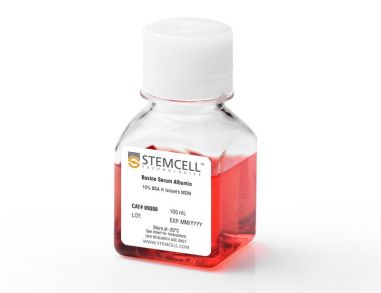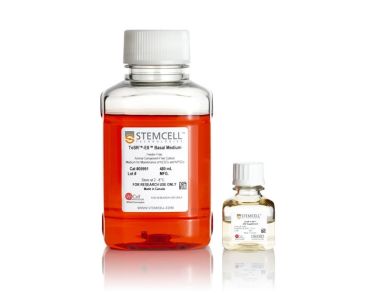搜索结果: 'methocult media formulations for mouse hematopoietic cells serum containing'
-
 缺氧室用管夹 更换缺氧小室的管夹
缺氧室用管夹 更换缺氧小室的管夹 -
 含有10% 牛血清白蛋白(BSA)的 Iscove's MDM 10% BSA在 Iscove's MDM中的溶液
含有10% 牛血清白蛋白(BSA)的 Iscove's MDM 10% BSA在 Iscove's MDM中的溶液 -
 DPBS(含 2% 胎牛血清) 细胞培养缓冲液
DPBS(含 2% 胎牛血清) 细胞培养缓冲液 -
 TeSR™-E8™ 无饲养层、无动物成分的人胚胎干细胞和诱导多能干细胞维持培养基
TeSR™-E8™ 无饲养层、无动物成分的人胚胎干细胞和诱导多能干细胞维持培养基 -
 STEMdiff™造血分化 - EB补充剂 A 无动物成分培养补充剂,用于中胚层定向分化并具备下游淋系分化潜能
STEMdiff™造血分化 - EB补充剂 A 无动物成分培养补充剂,用于中胚层定向分化并具备下游淋系分化潜能 -
 人iPSC衍生的间充质祖细胞 人诱导多能干细胞系SCTi003-A分化的冻存的间充质祖细胞
人iPSC衍生的间充质祖细胞 人诱导多能干细胞系SCTi003-A分化的冻存的间充质祖细胞 -
 冻存的人脐带血CD34+细胞 冻存的人原代细胞
冻存的人脐带血CD34+细胞 冻存的人原代细胞 -
 冻存的人脐带血Pan T细胞 冻存的人原代细胞
冻存的人脐带血Pan T细胞 冻存的人原代细胞 -
 人iPSC衍生的视网膜色素上皮细胞 人诱导多能干细胞系分化的冻存的视网膜色素上皮细胞
人iPSC衍生的视网膜色素上皮细胞 人诱导多能干细胞系分化的冻存的视网膜色素上皮细胞 -
 冻存的人外周血CD4+CD45RO+ T细胞 冻存的人原代细胞
冻存的人外周血CD4+CD45RO+ T细胞 冻存的人原代细胞 -
 Axygen® AxyMats™ 96孔PCR微孔板圆孔密封垫 用于密封 96 孔 PCR 微孔板圆孔的研究级硅胶垫
Axygen® AxyMats™ 96孔PCR微孔板圆孔密封垫 用于密封 96 孔 PCR 微孔板圆孔的研究级硅胶垫 -
 冻存的人外周血单个核细胞 冻存的人原代细胞
冻存的人外周血单个核细胞 冻存的人原代细胞


 EasySep™小鼠TIL(CD45)正选试剂盒
EasySep™小鼠TIL(CD45)正选试剂盒





 沪公网安备31010102008431号
沪公网安备31010102008431号